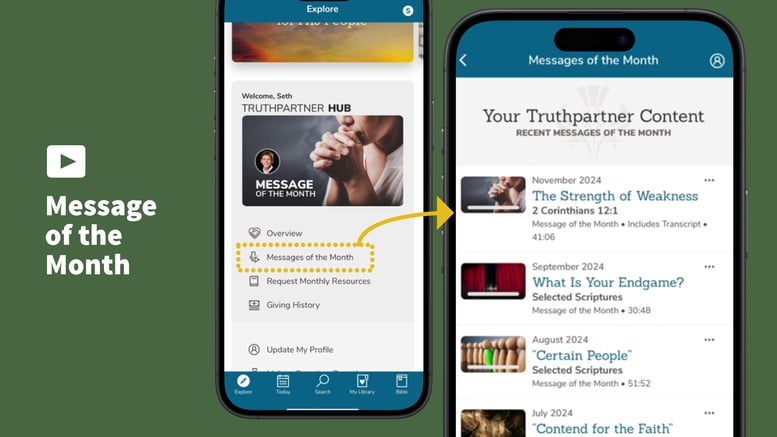Personal Identity
Francis Grimké’s understanding of personal identity drew deeply from his conviction that all human beings are created in the image of God and therefore worthy of equal honor and respect. The beauty of God’s image in all humanity was one of the most frequent themes in both his public writings and his personal reflections. At the same time, he also saw the benefits of familial and ethnic ties. Such relationships, he argued, also could contribute positively to a personal sense of self.
In fact, Grimké taught that the formation of a healthy self-concept demands that people hold on simultaneously to both the universal and the particular aspects of their identity. Self-respect and contentment depend upon a strong sense of self shaped by a commitment to the human race as a whole and also working for the good of one’s ethnic and familial community. The two must go together. While Grimké believed that particular obligations to family and community hold a special place, especially for the oppressed, he also refused to place these obligations in tension with more universal obligations. Throughout his life and ministry, he remained committed even to the nation that oppressed him and the denomination that marginalized him. Yet these same commitments crucially enabled the kind of righteous discontentment that could fuel the perseverance necessary to effect long-term social change in the face of otherwise discouraging circumstances.
God’s Image
The year 1899 in many ways marked the beginning of a period of unprecedented prosperity and influence for the United States on the global stage. The US Senate ratified the Treaty of Paris in February of that year, which brought a formal end to the Spanish-American War. Yet, just as the Black soldiers were clipped out of photographs in the press stories depicting Teddy Roosevelt’s victory, Grimké worried that the “strained relations” between the races in the South reflected unacceptable attitudes on the part of White people toward Black people.1 In June of that year he gave an address in which he appealed to the image of God as the foundation for understanding human identity.2
In that address, Grimké lamented that southerners viewed Black people as their inferiors, and he called upon people to bring their views in line with the teaching of Scripture. As he put it, “According to this book, which we receive as the word of God, the only infallible rule of faith and practice, God ‘hath made of one blood all nations of men’ [Acts 17:26].” All people share the same blood, and this reality reflects the teaching of Genesis that God created all human beings in his image. Therefore, there “isn’t a hint or suggestion” of, or even anything that could be “twisted” into an argument for, the superiority of one race over another. Grimké rejected the attempt of southern Whites to make such an argument in “dealing with the race question.”3
After laying this foundation, he proceeded to connect the image of God to both the law and the gospel. If all people were created in God’s image, then the same “moral standard” applies to all races. The Ten Command ments, the Sermon on the Mount, and Paul’s teaching on the centrality of love in 1 Corinthians 13 apply equally to all. Even more importantly, the gospel “plan of salvation” is the same for all of God’s people. People of “all races stand upon precisely the same footing.” All are “invited,” and, similarly, all are “equally welcomed.” The apostles were directed to disciple all nations. Citing Galatians 3:28, Grimké drew the obvious conclusion that “the same gospel is to be preached to all.” Drawing from the parable of the good Samaritan, he pointed out that if both the same moral standards and the same gospel message are for all people, then it is not enough for “white men to treat white men as they would like to be treated” or “black men to treat black men as they would like to be treated.” As those created in God’s image, all people stand in relation to all other people by the same rules, and all people stand in desperate need of the same grace.4
Grimké applied this twofold biblical affirmation of the equality of all people with reference to law and gospel to both temporal governance and evangelism. Regarding temporal concerns, he pointed out that the Declaration of Independence of the United States mirrored the biblical teaching that all people “are created equal” and therefore “are endowed by their Creator with certain inalienable rights [sic].” The US Constitution also reflected these same principles in guaranteeing to all its citizens the right to vote. These documents echoed the biblical teaching, as Grimké put it, that “civil and political rights” should be shared equally by members of all races. The failures of the United States and of White southerners were “contrary to the Word of God” and contrary to the “expressed provisions and declarations of the Constitution.”5
This multifaceted temporal failure required multifaceted solutions, and one of the most important remedies involved education that needed to be “social, political, moral, and religious.”6 Here it is important to emphasize that this temporal concern needed to be addressed both politically and religiously. Grimké carefully distinguished these facets, but he also refused to separate them. He observed that though editors and teachers certainly had a role to play, “ministers especially” possessed a crucial role as they proclaimed God’s moral law. Ministers, of all people, were aware that racial failures in society and the mistreatment of Black people in the South were “not in harmony with the letter or spirit” of God’s word. Therefore, Grimké wrote, “It is their duty to bring the teaching of that Word to bear upon present conditions, however unpopular it may be to do so.” Having treated the roles of ministers, he then went on to describe the roles of teachers and editors, observing the needed effect of these three forces working together.7
It also is important to emphasize that the role belonged to all Christians as members of the church and not just to Christian ministers.
The family of Christ shares the same Holy Spirit and therefore constitutes one united body.
In addition to “ministers, and elders, and deacons,” “members” also possessed a duty to model these principles as an example for others. The “Ten Commandments” and the “Sermon on the Mount” may be solutions for the “race problem,” but they “must have in back of them a living church—a church made up of men and women who are willing to take them up, and put them on their hearts, and live them out.”8 The duty belonged to all the members of the church in their various roles, and therefore Grimké could say that if the situation in the South failed to improve, the failure would largely belong to the church.9 In addition to these temporal concerns, which belonged to believers and to unbelievers alike, and which should be addressed through the preaching of God’s moral law by church leaders and through the living example of church members, Grimké also applied the doctrine of God’s image to more properly spiritual concerns, including evangelism. In 1916, he gave a provocative address, subsequently printed and distributed in the form of a tract, sensitive to the fact that “it is now almost impossible to get a matter like this into the [mainstream] religious press.”10 Proper evangelism required the whole preaching of the law and the gospel. It also needed direction—namely, the renewal of the person evangelized. Those created in God’s image needed the salvation of Jesus to be “renewed after the image of Him that created” them.11
The failure to see all people as God’s image bearers and the failure to pursue the renewal of all people in God’s image through evangelism were nothing less than fatal to work of evangelism in general and the ministry of the Institute for Evangelism in particular. Such failures contributed to a form of evangelism that was not just flawed but a hypocritical reproduction of false religion. As Grimké preached against such false evangelism, the doctrine of the image of God shaped his conception of the relationship between law and the gospel and its application to both temporal and spiritual concerns.
Narrowing the picture, Grimké also focused his doctrine of the image of God more particularly on other important implications. In his wellknown 1910 address “Christianity and Race Prejudice,” he emphasized the universally shared identity of all human beings. God created all humans in his image, and in that sense all people were created by the same Father. So also, in that same sense, all human beings are siblings. Though he carefully taught the unique relationship of brothers and sisters in Christ, Grimké was comfortable affirming the language of the universal “Fatherhood of God” (as the Creator of all) and the correlated “brotherhood of man.” He put it quite bluntly, in fact, stating, “Literally this is true—men are brothers— the human race is one.” Furthermore, this is not merely an abstract principle but one for daily life. Not only should all people believe that they are blood brothers, but they should also “feel toward each other as brothers” and “treat each other as brothers.” In this regard, Grimké freely admitted his own shortcomings: “I used to speak of the cracker element of the South” as “poor white trash,” he admitted, “but I never do it any more.”12
In addition to the universal, natural bonds that all human beings should recognize, considering their creation in the image of God, Grimké emphasized another sense in which Christians of all races constitute one family. Referring to Ephesians 4:4–6, Colossians 3:11, and 1 Corinthians 12:12–13, he stressed that Christians have been baptized into one Lord, one faith, and one baptism. These realities mean that unity in the family of Christ supersedes other national, ethnic, and class distinctions. The family of Christ shares the same Holy Spirit and therefore constitutes one united body. As a result, Christians share a twofold unity. First, as human beings their family includes all other human beings. Second, as believers in Christ their family includes all other Christians.
It is crucial to pay close attention to Grimké’s twofold understanding of “the Fatherhood of God” and the “brotherhood of man.” Whereas some other proponents of the social aspects of the gospel collapsed these two senses, Grimké’s approach differed sharply from such modernist approaches. For Grimké, unlike the modernists, the image of God shared by all humanity and the special relation shared by Christians are both important and yet always distinguishable. While all human beings are one family according to the first principle, Christians possess an even greater unity with their fellow believers resulting from union with Christ and their shared possession of the Holy Spirit. Therefore, the failure of self-professing White Christians to embrace their Black brothers and sisters was a double failure, and because of this it was even more lamentable.13
Grimké also notably relied on the “organic” language so popular in that era, and he connected it with biblical teaching to reject race prejudice and separation. Unity in Christ and the shared possession of the Holy Spirit constitute believers as “one organism.”14 Relying on the imagery of the vine and the branches in John 15, he emphasized that believers in Christ “are all branches of the true vine,” which therefore share the “same life-force.” In other words, “unity with Christ” is inseparable from “unity with one another.” As a result, the American tendency to allow race to lead to “separate churches and separate pews, and separate presbyteries, and separate conferences, and separate cemeteries, and separate every thing” was an affront to the unifying work of Christ and the shared possession of the Holy Spirit. Christian unity included “all races and colors and nationalities,” and Grimké was adamant that this organic unity ought to be expressed in the regular institutional life of the body of Christ.15
Francis Grimké made the biblical teaching of the shared possession of the image of God central to his teaching on personal identity. All human beings created in God’s image are worthy of dignity and respect. Believers in Christ not only share this image with all human beings, but as those redeemed in Christ they possess an additional unity that demands respect. The failure of the American church, and White Christians in particular, to celebrate and pursue the unity clearly taught by Jesus and all the Scriptures was legitimate grounds for righteous discontent.
Notes:
- Amy Kaplan, “Black and Blue on San Juan Hill,” in Cultures of United States Imperialism, ed. Amy Kaplan and Donald E. Pease (Durham, NC: Duke University Press, 1994), 219–36. For the history of the “Buffalo Soldiers,” see Bruce A. Galsrud, ed., Brothers to the Buffalo Soldiers: Perspectives on the African American Militia and Volunteers, 1865–1917 (Columbia, MO: University of Missouri Press, 2011).
- Francis J. Grimké, “The Remedy for the Present Strained Relations between the Races in the South” (1899), in Works, 1:317–33.
- Grimké, “The Remedy for the Present Strained Relations,” 319, 320
- Grimké, “The Remedy for the Present Strained Relations,” 320–22.
- Grimké, “The Remedy for the Present Strained Relations,” 322–23.
- Grimké, “The Remedy for the Present Strained Relations,” 324.
- Grimké, “The Remedy for the Present Strained Relations,” 328.
- Grimké, “The Remedy for the Present Strained Relations,” 328. Grimké’s explicit inclusion of women with men is notable, especially because this talk came twenty years prior to the passing of the Nineteenth Amendment to the Constitution of the United States, which gave women the right to vote.
- Grimké, “The Remedy for the Present Strained Relations,” 331.
- Francis J. Grimké, “Evangelism and the Institutes of Evangelism” (1916), in Works, 1:523–28; his reasons for printing the address as a tract appear on p. 527. For more on the context of this address, see chap. 2.
- Grimké, “Evangelism and the Institutes of Evangelism,” 524.
- Francis J. Grimké, “Christianity and Race Prejudice” (1910), in Works, 1:448. The use of the word “cracker” by Black people as a racial epithet to describe White people began in the 1800s and was common by the end of the century, certainly well before Grimké delivered this address in 1910. The word also carried class connotations as a reference to poor White people, though the racial connotation gradually became more predominant. It is not clear to what extent Grimké had in mind poverty in addition to race. But his awareness that the term carried negative, racialized connotations is clear, as is his regret for using the word. For the developing sense of the word, see Dana Ste. Claire, The Cracker Culture in Florida History (Gainsville: University Press of Florida, 2006), and especially John Solomon Otto, “Cracker: The History of a Southeastern, Ethnic, Economic, and Racial Epithet,” Names: A Journal of Onomastics 35, no. 1 (1987): 28–39.
- Grimké, “Christianity and Race Prejudice,” 450.
- Grimké, “Christianity and Race Prejudice,” 452.
- Grimké, “Christianity and Race Prejudice,” 452–53.
This article is adapted from Grimké on the Christian Life: Christian Vitality for the Church and World by Drew Martin.
Drew Martin (PhD, Vanderbilt University) is associate professor of systematic theology at Covenant Theological Seminary. He has served several churches as a pastor and as a church planter, is the author of The Covenant with Moses and the Kingdom of God, and writes on the history of Christian theology.
Related Articles








































 Mobile App: Select
your initials in the upper right-hand corner. You will be taken to the Account section. Then, click
“Truthpartner” and scroll down to
“Payment Method.” Tap the
pencil icon to update your pledge amount and payment information.
Mobile App: Select
your initials in the upper right-hand corner. You will be taken to the Account section. Then, click
“Truthpartner” and scroll down to
“Payment Method.” Tap the
pencil icon to update your pledge amount and payment information.
 Mobile App: Click
your initials in the upper right-hand corner. You will be taken to the Account section. Then, select
“Transactions,” and you will be directed to your account on truthforlife.org. From there, you can find your year-end receipt by selecting the
“Transactions” submenu.
Mobile App: Click
your initials in the upper right-hand corner. You will be taken to the Account section. Then, select
“Transactions,” and you will be directed to your account on truthforlife.org. From there, you can find your year-end receipt by selecting the
“Transactions” submenu.
 Mobile App:
Mobile App:  Mobile App: Select the
Mobile App: Select the
